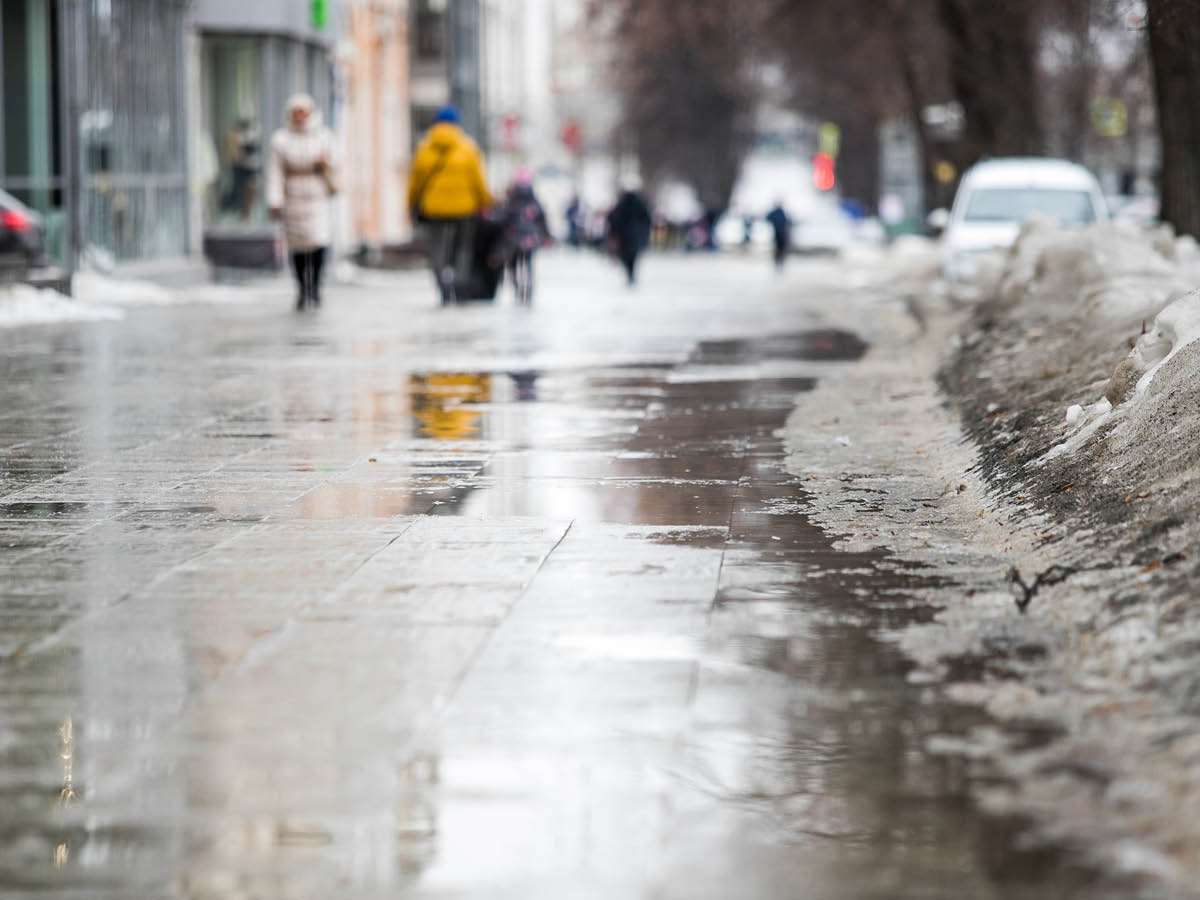Prevent water damage caused by melting snow

Warmer days will soon be here! And while everyone's eager to see the snow melt, it's important to remember that spring also means an increased risk of water damage.
Take the time to assess the condition of your building and make sure it can weather the spring thaw. Follow these tips to protect your business property and repair any damage that may have occurred over winter.
Preparing for snowmelt
Roof
Warmer weather causes the accumulated snow on roofs to melt, which increases the risk of water infiltration. If you can see more than 20 inches of compacted snow on the roof or 9 inches of snow, ice and water, it's time to call someone to remove it. We recommend that you hire a qualified professional with the right expertise and equipment for the job.
Gutters, downspouts and drains
To divert water away from your building, you need proper roof drainage. In the fall, leaves and other debris tend to accumulate in gutters, downspouts and drain mouths. Clear your building's drainage systems of this debris so that water can flow properly.
- Make sure gutters and drain mouths aren't blocked by accumulated ice, snow or other debris. Have any obstructions removed safely.
- If you have a flat roof, have any accumulation cleared by a qualified professional to prevent damage.
Once the snow has melted
Once your roof is cleared of ice and snow, having it assessed can help prevent water damage. You can examine the roof even if all the snow hasn't melted yet.
Pitched roofs
- Check for signs of wear and aging. Examine the condition of the roof material and look for upturned corners, missing or loose shingles or buckling.
- Check the flashing around chimneys and air vents. Make sure it isn't damaged or broken and that the caulking is in good condition.
- If you have a satellite dish or other equipment mounted to your roof, make sure it's securely attached.
- Carefully inspect gutters and downspouts:
- Make sure they haven't been twisted or dislodged by the weight of the snow.
- Check for signs of sinking gutters. If you see stagnant water, it may mean the slope of your roof isn't steep enough.
- Make sure your building's downspouts divert water as far away as possible from the foundation.
Flat roofs
- Verify the protective layer of asphalt. Make sure there's enough gravel to fully protect your roof from the elements. Gravel reflects ultraviolet rays and keeps dark surfaces from overheating in the sun. This helps prevent premature damage to your roof's membrane.
- Examine the general condition of your roof and look for signs of potential damage:
- Poorly sealed or leaking joints
- Signs of erosion
- Holes or cracks
- Sagging or blisters
- Missing flashing
- Unstable or inadequate supports (ventilation ducts, air conditioning units, antennas, etc.)
- After heavy rain, inspect slopes toward drains that are connected to downpipes. Make sure rain is draining as quickly as possible and that water is not pooling on the roof.
Doors and windows
Heavy rain can cause water to seep through doors and windows. Add the following steps to your annual spring inspection list:
- Check seals around your doors and windows to make sure they're watertight.
- Repair the caulking and replace weatherstripping if needed.
Foundation
Once the ground has thawed, it's very important to have your foundation assessed to detect any problems and prevent water damage:
- Inspect the inside and outside of the foundation thoroughly. If you see any cracks, have them repaired by a qualified professional right away.
- If you see any signs of efflorescence (white deposits or salt stains), localized humidity or seepage, call for a professional inspection.
Property insurance for your business
These preventive steps will help you ease into spring and avoid nasty surprises. Discover business insurance from The Personal, and enjoy peace of mind knowing your business and commercial buildings are well protected.
The Personal refers to The Personal General Insurance Inc.
Some conditions, exclusions and limitations may apply. These tips are provided for information and prevention purposes only. They are general in nature, and The Personal cannot be held liable for them. The Personal recommends using caution and consulting an expert for comprehensive and personalized advice.
